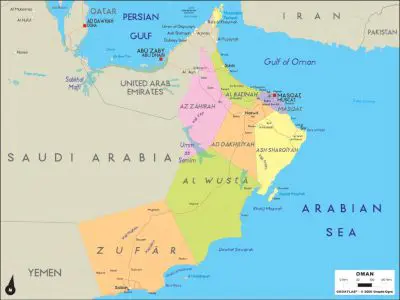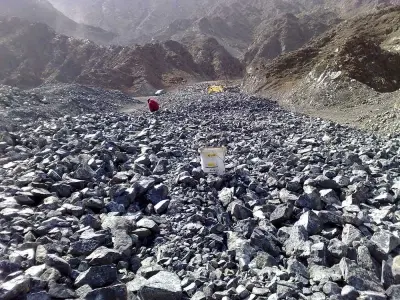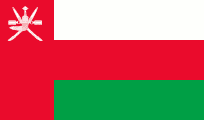Minerals Prices in Oman
Oman has two parts. A small part of Oman is located in the southern part of the Strait of Hormuz, which is called Musandam. Scientists have identified over 4000 minerals of the earth's crust. Muscat is located on the Arabian Peninsula with long, hot summers like any other Middle Eastern country. Substances that are formed based on natural processes are called minerals. Import of any goods to Oman is only possible by companies registered in Oman. Minerals can be identified by their physical properties, such as hardness, color, appearance (luster) and odor
Add your import and export orders to this list
Warning: Undefined variable $formTitle in /home/anbar/domains/anbar.asia/anbar/inc/html/desktop/orderform.php on line 10
Warning: Undefined variable $marketName in /home/anbar/domains/anbar.asia/anbar/inc/html/desktop/orderform.php on line 12
Warning: Undefined variable $location in /home/anbar/domains/anbar.asia/anbar/inc/html/desktop/orderform.php on line 12
If you want to trade in the , please join in Anbar Asia. Your order will be shown here, so the traders of contact you

Oman is one of the southern neighbors of Iran. The official language in Oman, like other countries in the Persian Gulf, is Arabic. Some minerals can be detected by a little more features than the naked eye. Access to free waters from the Oman Sea providing a good position for export to Oman like other Persian Gulf countries. Providing quality material has a huge impact on your reputation as a trader
- Oman Chromite Market
- Oman Sphalerite Market
- Oman Hematite Market
- Oman Galena Market
- Oman bauxite Market
- Oman Chalcopyrite Market
- Oman Coal Market
- Oman Cassitrite Market

This part is separated from the mainland. The eclipse is now called Madha, which is surrounded by the United Arab Emirates. Oman's current birthplace has been called by various names throughout history and has undergone changes. In some texts, Omana and Oman are also named. Oman is a non-Arabic word, but its most prominent old letters were Megan and its alterations were Majan.
Read More ...
Chromite is found as stone in nature. This stone is also known as chromite and contains chromium oxide with the formula FeCr2O4. Chromite occurs in mineral deposits and veins and may be found in the ground as small particles or larger deposits. Accumulations of chromite are found in some regions of the world including South Africa, Albania, Kazakhstan, Turkey and India.
Read More ...OverviewAlthough numerous quarrying and mining operations are underway in Oman, the Sultanate’s mineral resources are still relatively untapped, with large deposits of metals and industrial minerals waiting to be unearthed. Oman’s mountains host intact and exposed ophiolites, which could contain metal deposits such as chromite, cobalt, copper, gold, lead, magnesium, manganese, nickel, palladium, platinum, silver, vanadium, and zinc. Oman’s mining industry has attracted increasing interest from both foreign and local operators, being the first GCC producer and exporter of ferrochrome. In September 2014, the government established the Public Authority for Mining (PAM) to regulate the sector, and two years later it established Minerals Development Oman (MDO) as a new holding company to serve as the executive arm. Per Omani law, before submitting an application to obtain a mining license from the PAM, a company is required to get approvals from eight different ministries first. Gypsum: Oman is reportedly the world’s largest gypsum exporter. Domestic gypsum resources are estimated at more than one billion tons, and Oman is well-placed to meet rising Asian demand for this commodity at a time when traditional exporters are grappling with depleting resources or other challenges, according to media reports. Chromite: Approximately 30 million metric tons of chromite ore is located in Oman, according to a company that exports chromite ores from Oman. Oman started mining and exporting chromite ores in the early 1980s. In July 1991, the government established the Oman Chromite Company, and it was later listed on the Muscat stock market. Copper: In 2018, mining firm Alara Resources announced that it received the mining license from Omani authorities for its joint-venture Al Hadeetha copper project in the Sultanate. Other substantial activity in the sector includes the copper mining operations of Oman Mining Company and Mawarid Resources in the Sohar and Shinas areas, which have reached around 35 million tons of ore exploited. A joint venture between Oman Mining Company, Mawarid, and Oman Oil Company is investing in five separate copper deposits in Yanqul in the Al Dhahirah Governorate. Other Materials: Limestone for cement production is mined in both the northern and the southern areas to supply the Oman Cement Company's plant in the Rusayl Industrial Estate near As Sib and the Raysut Cement plant near Salalah. Leading Metallic Minerals: Copper, Chromite, Laterite, Minerals and Rocks: Limestone & Marble, Dolomite, Gypsum, Silica sands and Quartzite, Clays and Shale, Salt, Coal, Olivine, Kaoline, Salt, mining and minerals sector has been identified as one of the focus sectors for though there remains room for greater transparency. Along with the discovery of sizeable reserves of minerals such as gold, copper, and rare earth, there could be significant opportunities for U. Oman is focusing on the development of an internal rail network for the transportation of minerals from the southern interior to the Port of Duqm. Web Authority for Development OmanOman Minerals & Mining Exhibition & Business Group .
Read More ...
MUSCAT, March 18 - Oman’s newly enacted Law of Mineral Wealth comes into force today (March 19), 30 days after its issuance and publication in the Official Gazette on February 17. It includes a number of provisions designed to safeguard Oman’s mineral wealth, while supporting its prudent and sustainable exploitation in advancing economic development. “While the law features many provisions to encourage investment in the sector, it also stipulates penalties for actions detrimental to the sound of Oman’s mineral wealth,” Al Balushi added. It stipulates that all mineral resources, quarry materials and other related mineral wealth within Omani territorial limits, encompassing even Exclusive Economic Zone (EEZ) and continental shelf areas, are the property of the state, which shall be safeguarded, and only lawfully exploited for economic development. Mining is one of the Omani government’s focus sectors under its economic program. Oman’s mining industry has attracted increasing interest from both foreign and local operators as Oman was the first GCC producer and exporter of ferrochrome. The government established the Public Authority for Mining (PAM) in 2014 to regulate the sector, and two years later it established Minerals Development Oman (MDO) as a new holding company to serve as the executive arm. In August 2020, a royal decree dissolved PAM and transferred its powers to the newly created Ministry of Energy and Minerals, which could increase transparency and in Oman’s mining sector. In July 2021, the Ministry of Energy and Minerals (MEM) created a new unit, Industry Development of Energy and Minerals, to focus on the downstream processing of minerals and value addition in-country instead of exporting unprocessed raw materials. Although numerous quarrying and mining operations are underway, Oman’s mineral resources are still relatively untapped, with large deposits of metals and industrial minerals waiting to be unearthed. Oman’s mountains host intact and exposed ophiolites, which could contain metal deposits such as chromite, cobalt, copper, gold, lead, magnesium, manganese, nickel, palladium, platinum, silver, vanadium, and zinc. The following are some of the minerals in Oman that hold particular promise:. Gypsum: Oman is the world’s largest gypsum exporter by weight, shipping approximately 9. Chromite: Approximately 30 million metric tons of chromite ore are located in Oman, according to the Oman Chromite Company. Oman is exporting metallurgical grade chromite ores in response to rising demand from China and shortages of ferrochrome worldwide. Copper: Oman has identified large-scale copper mining as a strategic project and several foreign mining companies are active in Oman. In September 2020, British firm Savannah Resources sold its mining permits for two copper blocks in Oman to mine development company Force Commodities. Main Metallic Minerals: Copper, Chromite, Laterite, Manganese. Industrials Minerals and Rocks: Limestone, Marble, Dolomite, Gypsum, Silica sands and Quartzite, Clays and Shale, Salt, Coal, Olivine, Kaoline, Salt, Aggregates. Although foreign firms can acquire mining permits, foreign investors still face considerable bureaucratic and environmental challenges and may only be able to enter the market as service contractors or joint venture partners with Omani firms. Oman has longstanding plans to develop an internal rail network for the transportation of minerals from the southern interior to the Port of Duqm for processing and refining. Ministry of Energy and Minerals. “Direct Line” Webinar on Oman’s Mining Industry and presentations: https://om.
Read More ...
Significant legislative developments in 2019 laid the groundwork for positive growth in Oman’s mining sector. Mining and quarrying’s contribution to Oman’s economy continues to steadily increase. According to the Central Bank of Oman (CBO), in its Annual Report for 2018, the country’s mining sector recorded the highest rate of growth among non-oil activities, at 16%. In 2019 there were 50,000 people employed in the mining and quarrying sector, of which 30,300 were Omani. As with many of Oman’s key development sectors, there is a minimum Omanisation target of 35% for all private companies. As one of the five key sectors under the government’s National Programme for Enhancing Economic or Tanfeedh, the mining and quarrying sector is imperative for the of Oman’s economy. These projects and initiatives are set to increase the sector’s contribution to national GDP, provide more than 1600 direct jobs to Omanis and increase the country’s mineral production to 147m tonnes by 2023. The process of securing pre-approvals for mining blocks before they are auctioned off, which is done in a competitive tendering process, is one of several key initiatives proposed by the mining labs to accelerate investment in Oman’s mining and mineral processing industry. Building on PAM’s activities, Minerals Development Oman (MDO), a partnership of four sovereign Omani wealth funds and investment entities, was established in 2016 “to unleash the potential of Oman’s mining sector in support of the socio-economic progress of the Omani population, notably through employment creation, local capacity building, small business growth, community sustainable development and GDP growth”. MDO’s shareholders include the State General Reserve Fund (50%), the Oman Investment Fund (25%) and Oman National Investments Development Company (25%). As of 2019 it had invested in six major projects, including joint ventures with Mawarid Mining and state-owned Oman Mining Company. These firms, along with local Gulf Mining Group, Zawawi Minerals, Kunooz Oman Holding and Australian firm Alara Resources, are the key players in the Omani market. Savannah Resources is a 65% shareholder in Omani company Al Fairuz Mining, which holds the exploration licence for Block 5, encompassing the two deposits. Meanwhile, in 2019 Oman Mining Company conducted feasibility studies on its Lasail, Aarja and Bayda mines, located in Sohar, regarding the possible extraction of additional ore reserves. An objective of these studies is to increase employment opportunities for Omani nationals across all levels. Any entity found conducting mining activities without a licence is subject to penalties, confiscation of any produced minerals and possible criminal liability. For example, the Manajem Mining project, located in the north of Oman, is a joint venture between MDO (40%) and Mawarid Mining (60%). It was signed in 2018 for an exploration programme for metallic minerals, mainly copper and gold, in Blocks 1 and 2. In terms of non-metallic minerals, Oman is most abundant in dolomite, limestone, gypsum, clay, silica, ornamental stones and building materials, resources which are spread throughout the country. Duqm, meanwhile, in central Oman, holds reserves of industrial minerals and salt. Building material made up the highest share, with about 60% of the total mineral production in 2018, followed by limestone, marble and gypsum, the latter of which Oman remains the world’s largest producer. The slight decline in production was offset by promising developments in minerals, such as copper, potash and gabbro. Savannah Resources’ actions follow that of Alara Resources, a 70% partner in local Omani company Al Hadeetha Resources. In June 2018 the government awarded Alara Resources the licence to develop a major deposit at the copper project in the Al Mudhaibi wilayat (province), which served as the first copper mining licence in Oman since 2004. SOP, with its potassium and sulphur components, has a competitive edge over the more commonly available muriate of potash-type fertiliser in world markets and is expected to help to develop and diversify Oman’s export offering. The third-most prominent mineral in Oman is gabbro, an igneous rock used in the construction sector. During the April 2017 Oman Mining Expo MDO signed a joint venture agreement with Omani trading and investment firm Assarain Group for a new gabbro concession in Liwa. Oman’s infrastructure has seen steady investment over recent years. Marafi, a newly established organisation and subsidiary of state-owned holding company Asyad Group, has stated its intention to develop Oman into one of the top-10 logistics centres globally, attracting foreign investment and creating jobs across every sector. This development will be Oman’s first minerals terminal and will provide a welcome boost to the country’s exports. In May 2019 the Asyad-owned Oman Rail Company announced that it would resume tendering for the project as a public-private partnership within the year. When complete, the line could potentially extend up to 653 km and support the annual transport of 30m tonnes of minerals, 1m tonnes of oilfield equipment, 3m tonnes of industrial goods and as much as 15m tonnes of general products. Oman has seen rapid expansion in the export of its mineral products in recent years. Iron ore is Oman’s largest metallic export, with a value of $1bn in 2017, more than double its $484m total in 2016. With domestic gypsum resources estimated at more than 1bn tonnes, Oman is extremely well placed to meet this demand. Oman’s strong commitment to creating an encouraging climate for its mining sector looks set to continue driving investment into the sector in the short to medium term. This article is from the Mining chapter of The Report: Oman 2020.
Read More ...
Oman is the second largest country after Saudi Arabia in the Gulf Cooperation Council region. Since 2014, the Omani Government has been expanding mining activity in the country. It launched the Public Authority for Mining under the Ministry of Commerce and Industry to regulate the mining sector, and Mining Development Oman (MDO) in January 2016 to strengthen private sector involvement and investment. As the government looks to diversify and move away from dependence on oil revenue and to create jobs for Omani nationals, growth is anticipated in the mining sector following the discovery of significant reserves of minerals, including gold, copper and rare earths. Oman Mining Company LLC (OMCO) is a state-owned company established by a Royal Decree based in Sohar, north-eastern Oman. Gulf Mining Group is a leading player in Oman’s mineral sector. The group plans to set up a major potash mining project with an investment of US$300 to US$500 million targeting prolific reserves in central Oman. It is also one of the largest producers of gypsum in Oman. Kunooz Oman Holding is a major integrated player in Oman’s mining and mineral processing sector for limestone and gypsum. Zawawi Minerals, part of the Qais Zawawi Group, is focused on developing Oman’s industrial minerals such as gypsum, limestone, dolomite and chrome ore. This is one of five mining licence applications that Alara Resources has been issued in Oman, three of which pertain to the Al Hadeetha Copper Project. In 2014, UK-based company Savannah Resources bought Canadian company Gentor assets in Oman. In 2017, Savannah secured operating permits for the high-grade copper Mahab 4 and Maqail South mining licence applications in Oman. Oman is also home to an aluminium smelter at Sohar, which is 40% owned by Sohar Aluminium, 40% by Abu Dhabi Energy and 20% by Rio Tinto Alcan. There are operational challenges in Oman that translate to opportunities for Australian innovation. The Omani mining sector is seeking exploration expertise, industrial mineral processing technology, equipment and experienced companies to develop mineral-based manufacturing. The Sultanate of Oman has adopted a policy of economic and creation of a national economy based on private enterprise. Oman seeks foreign investment, especially in the mining, food processing, logistics, information technology, tourism, healthcare, fisheries, and higher education sectors. To diversify its economy, Oman is revamping its ports infrastructure from Muscat to Duqm, Sohar and Salalah. Oman seeks to utilise its strategic location in the Arabian Peninsula to become a hub for international shipping. Government efforts to diversify revenue streams and ramp up reforms are driving positive growth in Oman and attracting more investors to the country. Foreign goods are imported according to Oman’s tariff schedule, which imposes duties not exceeding 10%. Bayan system is an online single service from the Directorate General of Customs, Royal Oman Police (ROP). For more details, visit the Royal Oman Police. In Oman, there is a strong focus on forming relationships to carry out business.
Read More ...
https://www.omanobserver.om/article/35569/Head%20stories/new-mining-law-to-boost-investments
https://www.export.gov/apex/article2?id=Oman-Mining-and-Materials

